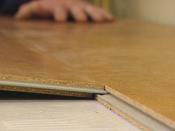Search
Login
Advantages of Atacamast125 Sealant
Since ancient times, mankind has been solving the problem of how to eliminate gaps and gaps in the construction of premises. And then the modern Atakamast-125 sealant appeared, which, in some of its parameters, has no analogues on the market at all.
Content
- Specifications
- Sealant versatility
- Surface preparation before applying sealant
- Application of sealant Atacamast125
- Sealant Errors
Specifications
Basis: polyacrylate.
Consistency: thixotropic (non-flowing) paste.

The time of formation of the surface film: 1 hour, with a layer thickness of 5 mm. -36 hours (at a temperature of +23 degrees and normal humidity).
Density: 1400 kg / cubic meter.
Application temperature range: from -20 degrees to +30 degrees Celsius.
Operating temperature range: from -50 degrees to + 70 degrees Celsius.
Adhesive Strength: 1.38 kgf / cm.
Conditional durability at the moment of a gap: not less than 0,2 MPas.
predicted service life: at least 25 years.
Packing: a plastic bucket of 15 kg. or 7 kg., file package 600 ml.
Sealant versatility
Sealant Atakamas 125, is intended primarily for use in wooden housing construction. It is a one-component, acrylate, siliko-sealed sealant; its versatility allows its use in sealing joints in panel buildings, in foam concrete and brick structures. Atacamast125 has good adhesion to concrete, polymer concrete, plaster, metal, natural stone, PVC.
Due to its versatility, it can be used to seal the folds on the roof. Due to its widespread use, as they say, application for all occasions, the color scheme of this sealant is very wide.
For instance:
- a building made of silicate brick, a white compound is required;
- For concrete or natural stone, gray material is well suited;
- for a wooden house, shades of sealant light oak, dark oak, light pine, golden pine, larch are developed.
By individual order, the sealant is produced in any color scheme. All needs, according to the color version of the sealant, are fulfilled in the expectation that the sealant literally merges with the surface being treated.
In addition, Atakamas125 has the ability to reduce viscosity under mechanical stress and return to its original form at rest (thixotropy), because of this it can be applied to both horizontal and vertical or inclined surfaces.
Surface preparation before applying sealant
Before applying the sealant, the surface is cleaned of dirt, dust, grease, residues of cement mortar, the remains of previous sealants are removed. Atacamas125 universal sealant can be applied on a damp surface, but, of course, not on top of a layer of water, snow or ice. Naturally, in rainy weather, during snowfall, fog, i.e., with increased humidity, it is better to postpone the sealing work.
Application of Atacamas125 sealant
This sealant is sold fully ready for use, so you do not need to improve it, in no case should you dilute the composition with water. Because such experiments can seriously affect the properties of the sealant, adhesion may decrease, and this can subsequently lead to cracking.
In work, it is recommended to use Wilaterm foam polyethylene release liners or lay a tourniquet, the latter option is more common and is used to comply with the design layer thickness. The tourniquet is chosen wider than the sealed seam (by 20-30%), during operation it should completely fill the mouth.
In operation, it is convenient to apply the sealant using a special syringe; this syringe makes the layer even and avoids voids. But, in principle, the sealant can be applied with a spatula.
There are special patterns, with their help, the seam can be given the necessary shape. To obtain a more accurate seam, to protect the wood from pollution, on the front edges of the structure, before applying the sealant, it is necessary to stick the masking tape, after the work is done, it is removed.
After applying the sealant, an irreversible vulcanization process begins and an elastic rubber-like material is formed. This process of vulcanization or polymerization, from the moment of applying the sealant, to the complete set of physical and mechanical properties by it, can be divided into two stages.
First stage - formation of a surface film. The rate of surface film formation or the duration of the first stage depends on the ambient temperature and air humidity. For example, at a temperature equal to +25 degrees Celsius and a humidity of 50%, this period will be 30 minutes.
With increasing humidity, time increases. During this period, the sealant can be corrected as plasticine, give the seam different shapes, while it is necessary to protect the sealant for a while from the effects of precipitation, if any.
Second phase - polymerization. The time of the second stage is directly dependent on air humidity and is approximately 48 hours. The seam, with a coating thickness of 5 mm., Gains strength and elastic properties within two days.
If at the first stage the seam was protected from moisture, then at the second stage strong heat is undesirable for it. Therefore, in the summer, the seam must be moistened with water from a spray gun to increase adhesion and so that the vulcanization process proceeds smoothly, rather than spasmodically.
Sealant Errors
The main reason for premature depressurization of the joint is poor quality work.
1. Diluting sealant with water. The result is dripping off the sealant from the wall or cracking, or peeling off when dry.
2. Poor sanitary preparation of the edges of the seam, namely: dust, dirt, greasy spots are poorly removed, as well as the presence of snow or ice on the surface.
Bottom line: lack of adhesion of the sealant to the treated surface.
3. Sealing at temperatures from 0 to +5 degrees Celsius and humidity above 90%.
Bottom line: the sealant is swimming off and drying for a long time.
4. Performance of work at temperatures above +25 degrees Celsius and low humidity without preliminary wetting of the surface seam.
Result: poor adhesion of the sealant to the surface and adhesive failure of the seam during operation.





